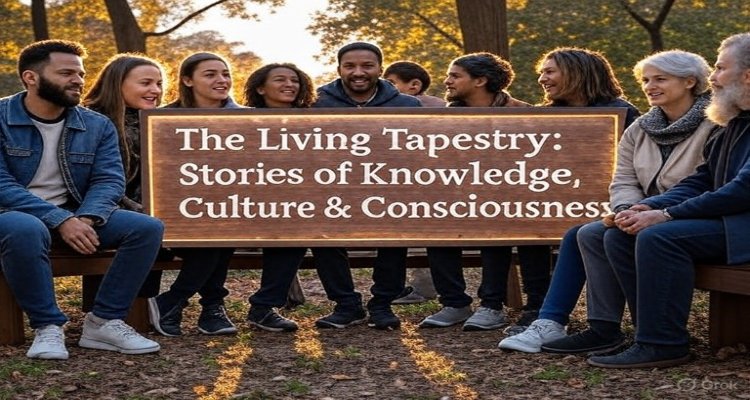The Living Tapestry: Stories of Knowledge, Culture & Consciousness
A deep dive into “The Living Tapestry”—how stories of knowledge, culture, and consciousness shape humanity’s past, present, and future.
Introduction
Every society, from the earliest tribes to modern cities, is built on a tapestry of shared stories. These narratives—woven from knowledge, culture, and human consciousness—form the invisible threads that connect generations. “The Living Tapestry” is not a physical fabric but a metaphor for how humanity stores, shares, and evolves its collective wisdom. Today, in a world caught between rapid technological change and timeless traditions, this living tapestry has become more relevant than ever.
Context & Background
The concept of a tapestry is deeply symbolic. In ancient civilizations, textiles were more than practical objects; they carried symbols of belief, power, and memory. Similarly, human knowledge and cultural practices have always been transmitted in woven patterns—oral storytelling, manuscripts, art, rituals, and now, digital archives.
Historically, libraries such as Alexandria, monasteries in medieval Europe, and oral traditions in Africa and Asia acted as cultural weavers, preserving consciousness for future generations. Yet, each era has also seen frayed edges—knowledge lost to wars, cultures erased through colonization, or traditions diluted by globalization. Despite these losses, humanity’s tapestry has endured, reshaped by each passing generation.
Main Developments: The Evolving Fabric of Humanity
In the 21st century, the tapestry of knowledge and culture is undergoing its most dramatic transformation since the printing press. Digital technology has democratized access to information. A song from Mongolia, a recipe from Mexico, or a meditation practice from India can reach millions in seconds. Knowledge no longer belongs to the elite—it lives in the cloud, accessible to almost anyone with an internet connection.
But this democratization comes with complexity. Just as old traditions risk fading, new narratives—some misleading or shallow—are woven into the fabric. The global conversation now includes artificial intelligence, climate change, and cultural hybridization, raising questions: Whose stories will dominate? Whose knowledge will be remembered?
This living tapestry reflects not just what we know, but how we perceive ourselves. Neuroscience, for instance, is uncovering how human consciousness is shaped by storytelling itself, proving that culture is not only external but deeply encoded in our brains.
Expert Insight & Public Reaction
Dr. Maya Linton, a cultural anthropologist at Columbia University, explains:
“Every culture contributes a unique thread to humanity’s collective fabric. When a tradition disappears, it’s not just a local loss—it’s a missing pattern in the global design.”
Public sentiment echoes this view. Younger generations increasingly seek to reconnect with their roots through language revival, indigenous art, and sustainable practices once dismissed as outdated. At the same time, social media has become both a preserver and disruptor, offering a platform for marginalized voices while also commodifying culture.
Impact & Implications
The implications of this living tapestry stretch far beyond academics. Policymakers rely on cultural knowledge to design inclusive societies. Educators are rethinking curricula to integrate indigenous wisdom with modern science. Even in business, companies are realizing that cultural consciousness is vital for global collaboration.
At a deeper level, this evolving tapestry may redefine human identity. As people blend ancestral traditions with digital-age knowledge, new forms of consciousness emerge—global yet personal, rooted yet dynamic. The challenge is to protect authenticity while embracing evolution.
Conclusion
“The Living Tapestry” is more than a poetic metaphor—it is a call to action. Preserving stories of knowledge, culture, and consciousness ensures that humanity does not lose its depth in the race toward innovation. Just as a tapestry is strongest when woven with many colors and textures, our shared future depends on honoring every thread—old and new—that contributes to the human story.
If the past shows us resilience, the present demands awareness, and the future offers possibility. The tapestry lives on, as long as we keep weaving.
Disclaimer: This article is an original journalistic exploration based on the provided headline. It is intended for informational and educational purposes and does not represent the views of any institution or individual quoted.











